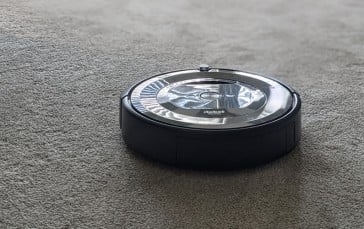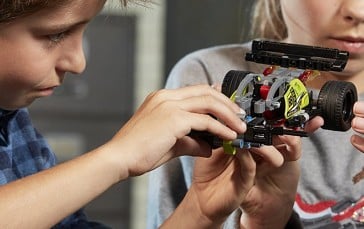“Living” robots have now existed on earth for some time. No, seriously; a team of scientists from the University of Vermont and Tufts University created programmable organisms from living cells in 2019. Now, that same team has compelled them to reproduce — and they have obliged.
Scared yet? Get ready to be: the world’s first living robots capable of replicating themselves are being born right now. Called xenobots, they also appear to be able to learn.
The research team announced the feat in a paper it published on November 29. The document details the strange organisms’ method of reproduction, discusses methods the team used to influence it, and posits future utilities the creatures/machines might perform.
On our first scan, it didn’t appear to promise apocalyptic bioweaponry or rogue androids; but one can dream.
What Are Xenobots? ‘Living’ Robots Explained
To create organisms that are both alive and programmable, the joint research team started with frog stem cells and a supercomputer algorithm. The idea was to make the algorithm simulate what would happen if the team structured the stem cells in various arrangements, in a fluid suspension. Once it settled on a shape for the organism/robot, it would use the program to optimize the result toward certain tasks or outcomes.
Once they had the design, they built it, using microscopic forceps and electrodes to rearrange embryonic cells of African clawed frogs. Soon, the flesh responded. The infinitesimal (sub-millimeter) configurations moved around as predicted by the simulation, and even performed tasks like transporting tiny payloads. Skin cells functioned as a structural scaffold; heart muscle cells generated locomotion.
The scientific name for African clawed frogs is Xenopus laevis — thus, the new hybridic creations were “xenobots.”
“These are novel living machines,” University of Vermont computer scientist and roboticist Joshua Bongard said at the time. “They’re neither a traditional robot nor a known species of animal. It’s a new class of artifact: a living, programmable organism.”

Xenobots Do the Dirty: Programmed to Procreate
Xenobots were technically alive, but in a somewhat limited capacity: they couldn’t eat (instead, they functioned on pre-loaded nutrient cocktails and died within a week) and they couldn’t, well, you know — do it.
So Bongard and the team got back to work. Now, xenobots can reproduce — via a method seen nowhere else among living organisms.
To get the xenobots to get jiggy with it, the researchers simply dropped a bunch of them into a petri dish together. As they added more and more xenobots to the party, they found that a cloud of loose stem cells started to develop. Eventually, the xenobots’ scurrying movement started to aggregate the loose cells into unconsolidated piles.
Then, the piles of loose cells consolidated themselves and became new xenobots. Members of the new generation soon mirrored their progenitors: they, too, started moving around in the solution, constituting their own offspring.
The phenomenon, called spontaneous kinematic self-replication, has been observed before, but never in living multicellular beings. Furthermore, the xenobots exhibited (or learned) how to do it fascinatingly quickly.
“We find that synthetic multicellular assemblies can…replicate kinematically by moving and compressing dissociated cells in their environment into functional self-copies,” the paper states. “This form of perpetuation, previously unseen in any organism, arises spontaneously over days rather than evolving over millennia.”
Not only that, the team figured out how to make them do it even more efficiently. They found that they could simulate more favorable reproductive conditions with artificial intelligence, and that the xenobots would respond accordingly.
Real World: What Will Living, Reproducing Robots Do?
Note well that xenobots are still a pretty long way from doing anything outside the lab. They still can’t (or don’t) eat, and they’re still microscopic. But the implications, as we’ve touched on, range far and wide.
Naturally, the team scientists seem to recognize the potential of what they’ve got on their hands.
“We can imagine many useful applications of these living robots that other machines can’t do,” Tufts Univeristy biologist Michael Levin said, “like searching out nasty compounds or radioactive contamination, gathering microplastic in the oceans, traveling in arteries to scrape out plaque.”
We think those sound great. Whether or not we will instead throw ourselves pell-mell into the plot of I, Robot, Do Androids Dream of Electric Sheep?, Terminator, et. al remains to be seen. In fact, whether xenobots do it for us remains to be seen.
Either way, the best course of action looks to be getting used to co-existing with living robots. All systems are go on xenobot research — some reports indicate that nerve cell experimentation is next. And everyone knows what happens when you combine nerve cells with reproductive…behavior.
The team concludes that the xenobots’ new abilities “suggest that future technologies may, with little outside guidance, become more useful as they spread. And,” it added, “that life harbors surprising behaviors just below the surface, waiting to be uncovered.”
Learn more at Pnas.org.










